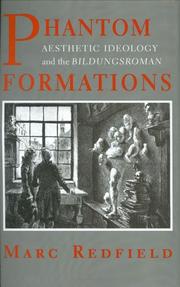| Listing 1 - 2 of 2 |
Sort by
|
Book
ISBN: 1527526828 9781527526822 9781527508736 1527508730 Year: 2018 Publisher: Newcastle Upon Tyne : Cambridge Scholars Publishing,
Abstract | Keywords | Export | Availability | Bookmark
 Loading...
Loading...Choose an application
- Reference Manager
- EndNote
- RefWorks (Direct export to RefWorks)
What is early modern philosophy? Two interpretative trends have predominated in the related literature. One, with roots in the work of Hegel and Heidegger, sees early modern thinking either as the outcome of a process of gradual rationalization (leading to the principle of sufficient reason, and to "ontology" as distinct from metaphysics), or as a reflection of an inherent subjectivity or representational semantics. The other sees it as reformulations of medieval versions of substance and cause, suggested by, or leading to, early modern scientific developments.This book proposes a rather different kind of explanation. It suggests that the concept of relation, specifically that of dyadic, anti-symmetrical relations, can throw light on a wide variety of developments in early modern thought, such as those concerning causality, sense perception, temporality, and the mereological approach to substance. The book argues that these relations are grounded in an interpretation of causal influence, and not in semantic theories or subjectivity.Furthermore, if it is correct that the problem of unity was, for most of classical antiquity, what the problems of motion, causality and perception were for early modern thinkers, then early modern thought is much closer to the thought of Aristotle than is commonly supposed. The genesis of early modern thought might instead be taken to have occurred in opposition to one aspect of the thought of Duns Scotus (an aspect that lives on in contemporary Neo-Aristotelianism), and that can be explained once the relational perspective examined here is taken into account.
Philosophy, Modern --- Philosophy, Modern. --- Philosophie moderne.

ISBN: 0801432367 9780801432361 1501723189 1501723170 9781501723179 1501723162 9781501723162 Year: 2018 Publisher: Cornell University Press
Abstract | Keywords | Export | Availability | Bookmark
 Loading...
Loading...Choose an application
- Reference Manager
- EndNote
- RefWorks (Direct export to RefWorks)
Marc Redfield maintains that the literary genre of the Bildungsroman brings into sharp focus the contradictions of aesthetics, and also that aesthetics exemplifies what is called ideology. He combines a wide-ranging account of the history and theory of aesthetics with close readings of novels by Goethe, George Eliot, and Gustave Flaubert. For Redfield, these fictions of character formation demonstrate the paradoxical relation between aesthetics and literature: the notion of the Bildungsroman may be expanded to apply to any text that can be figured as a subject producing itself in history, which is to say any text whatsoever. At the same time, the category may be contracted to include only a handful of novels, (or even none at all), a paradox that has led critics to denigrate the Bildungsroman as a phantom genre.
Aesthetics [Modern ] --- Bildungsroman --- Esthetica (Moderne filosofie) --- Esthetica [Moderne ] --- Esthétique (Philosophie moderne) --- Esthétique moderne --- Modern aesthetics --- Moderne esthetica --- Roman éducatif --- Aesthetics, Modern. --- Bildungsromans --- European fiction --- German fiction --- History and criticism. --- Aesthetics, Modern --- History and criticism --- 19th century --- Literature: history & criticism
| Listing 1 - 2 of 2 |
Sort by
|

 Search
Search Feedback
Feedback About UniCat
About UniCat  Help
Help News
News